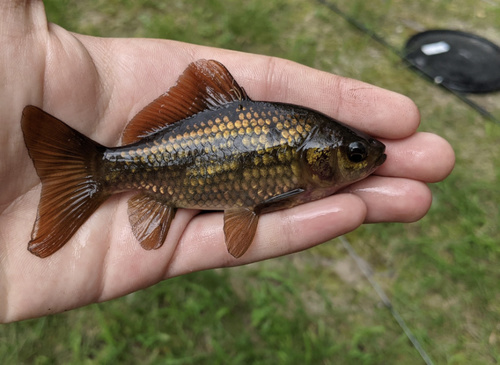
Goldfish
The Bluefin Tuna (Thunnus) is a group of large, powerful, and highly migratory fish belonging to the Scombridae family. Prized for their meat, particularly in sushi, they are among the most commercially valuable fish in the world. Their unique physiology and behavior make them apex predators in their oceanic habitats.
5 30 years
Lifespan
15 - 35 cm
Length
Not Evaluated
Conservation Status
4 km/h
Swimming speed
Omnivorous, Detritivorous
Diet
Sedentary
Migration
Appearance Overview
The Bluefin Tuna is renowned for its large, streamlined body, built for speed and endurance.
Color
Dark metallic blue on top with a silvery underside
Fins
Two dorsal fins, the first depressible into a groove; short pectoral fins
Length
Up to 10 feet (3 meters), commonly 6.5 feet (2 meters)
Weight
Up to 1,500 lbs (680 kg), commonly around 550 lbs (250 kg)
Diet
Carnivorous, feeding on fish, squid, crustaceans, and eel.
Feeding Behavior
Highly active predator, uses speed to chase down prey, and may hunt cooperatively.
Social Behavior
Forms schools, sometimes segregated by size; highly migratory.
Commercial Relevance
Extremely high value, particularly in sushi and sashimi markets, leading to significant overfishing.
Conservation measures
International fishing quotas, catch limits, and monitoring programs; some aquaculture efforts.
Status
Varies by species: Atlantic Bluefin - Endangered; Southern Bluefin - Critically Endangered; Pacific Bluefin - Vulnerable.
Threats
Overfishing, bycatch in other fisheries, illegal fishing, and habitat degradation.
Habitat Distribution
Depth Range
0-1,000 meters, though they often stay in the upper layers of the ocean.
Geographic Range
Atlantic Ocean (from Newfoundland to the Mediterranean Sea), Pacific Ocean, and Southern Ocean.
Preferred Environment
Temperate and subtropical waters; open ocean and coastal areas.
Reproduction and Life Cycle
Breeding Habits
Spawns in warm waters, often in specific areas like the Gulf of Mexico and the Mediterranean Sea. Spawning season varies by location.
Development Stages
Eggs hatch into larvae, which develop rapidly, feeding on plankton. Juveniles grow quickly, reaching significant size within a few years.
Fecundity
Females can produce millions of eggs per spawning season (up to 30 million), depending on their size and condition.
Maturity Age
Matures at 4-8 years for Atlantic Bluefin, later for Southern Bluefin (8-12 years).
Faqs about Goldfish
Where can Bluefin tuna be found?
Bluefin tuna are found in the Atlantic, Pacific, and Indian Oceans, as well as the Mediterranean Sea.
What do Bluefin tuna eat?
They primarily eat fish, squid, crustaceans, and other marine organisms.
How long do Bluefin tuna live?
Bluefin tuna can live up to 40 years, though this varies by species.
Are Bluefin tuna migratory?
Yes, they are highly migratory, often traveling thousands of miles across oceans.
Why are Bluefin tuna hard to catch?
Their speed, size, and powerful muscles make them challenging to catch, requiring specialized gear.
Are Bluefin Tuna Warm-Blooded
They are warm-blooded, which allows them to maintain a higher body temperature than the surrounding water, aiding in their speed and activity in cold waters.
Copyright @ Nature Style Limited. All Rights Reserved.
 English
English